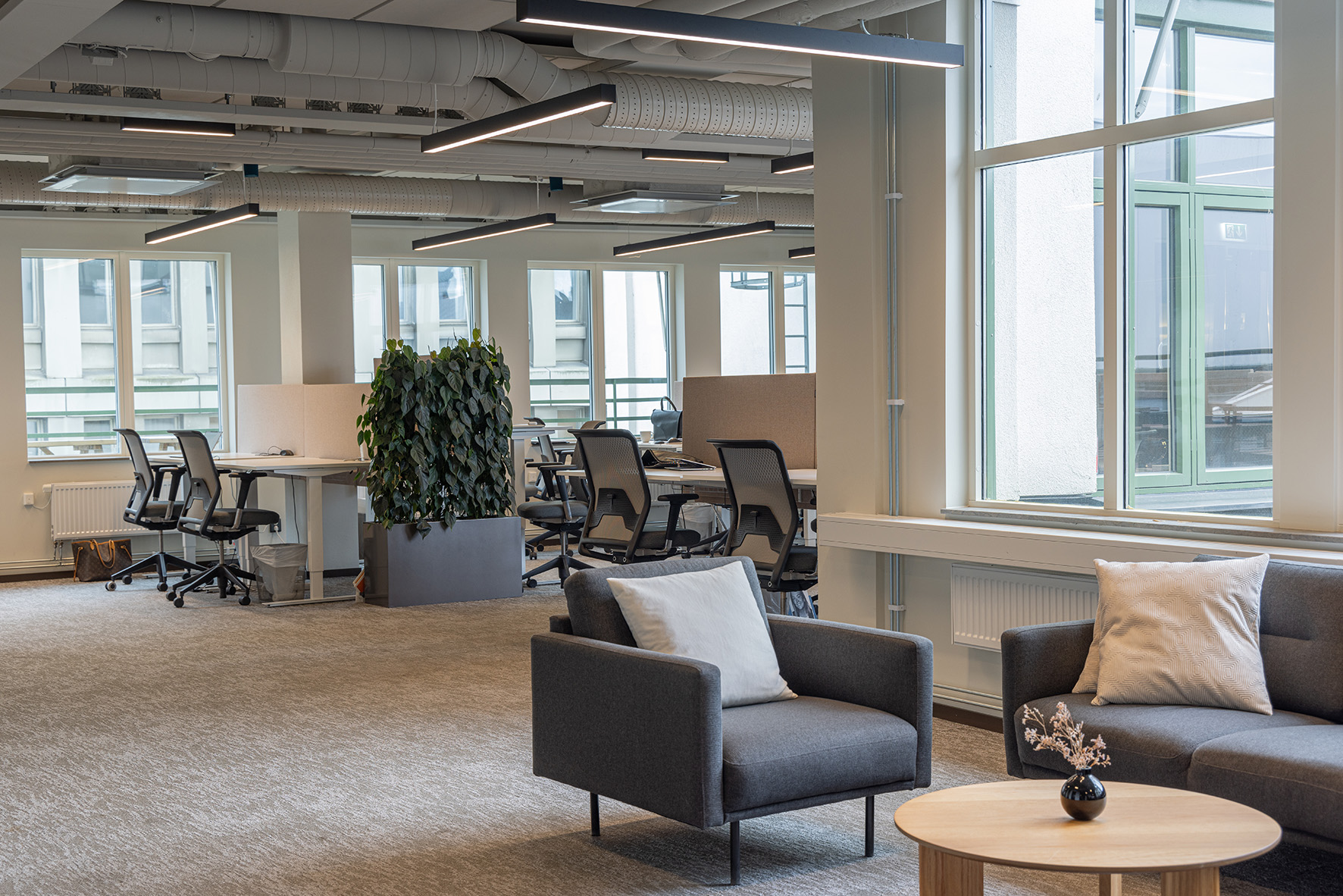
Holistic approach among system suppliers could improve sustainability performance
Together with Swegon Group, a leading company in indoor climate, we at Fagerhult Group see significant opportunities for driving a paradigm shift towards a more holistic approach within the sector. Today, heating, cooling, ventilation and lighting account for 60 per cent of the energy consumed in buildings. Numerous benefits can be achieved simply by integrating a connected lighting and ventilation system.
A granular network of sensors is created using a lighting system in which each fixture is connected and is equipped with a motion sensor and light sensor. Used properly, this infrastructure can create a healthier and more productive environment. For instance, the ventilation and lighting can be adjusted to suit the use of the space and match the available daylight and the day-night rhythm. As well as allowing property owners to optimise energy efficiency based on actual use, it enables the visualisation of how often, what times and by how many people the building is used. The system learns when and what areas of the building are being used and the presence data gathered help us predict future use.
Together with Swegon we have identified following actions to achieve further energy savings and improved sustainability performance:
- Demand that suppliers deliver open systems
Instead of using individual labels and designations in an integration, as is the more traditional way, make sure to introduce an industry standard that allows for easy integration with other systems. We believe in open standards for communication and we stand behind RealEstateCore as it’s based on Open Source and has already gained popularity with several players, giving it the potential to become established among manufacturers and property owners. - Reduce the number of sensors in buildings
It is possible to reduce the number of sensors by integrating multiple systems. This also facilitates installation and maintenance, and cuts down the carbon footprint of the building through a lower percentage of embodied carbon emissions. - Use digital technologies to predict the future
Dynamic learning systems/AI offer tremendous potential for benefitting from presence and light data about the building that are accumulated over time. Air flow and cooling systems in the building, for example, can be optimised by controlling the temperature in rooms that face the sun, or by reducing the temperature in a conference room before it fills up with people. This increases the indoor comfort and reduces the building’s energy consumption.